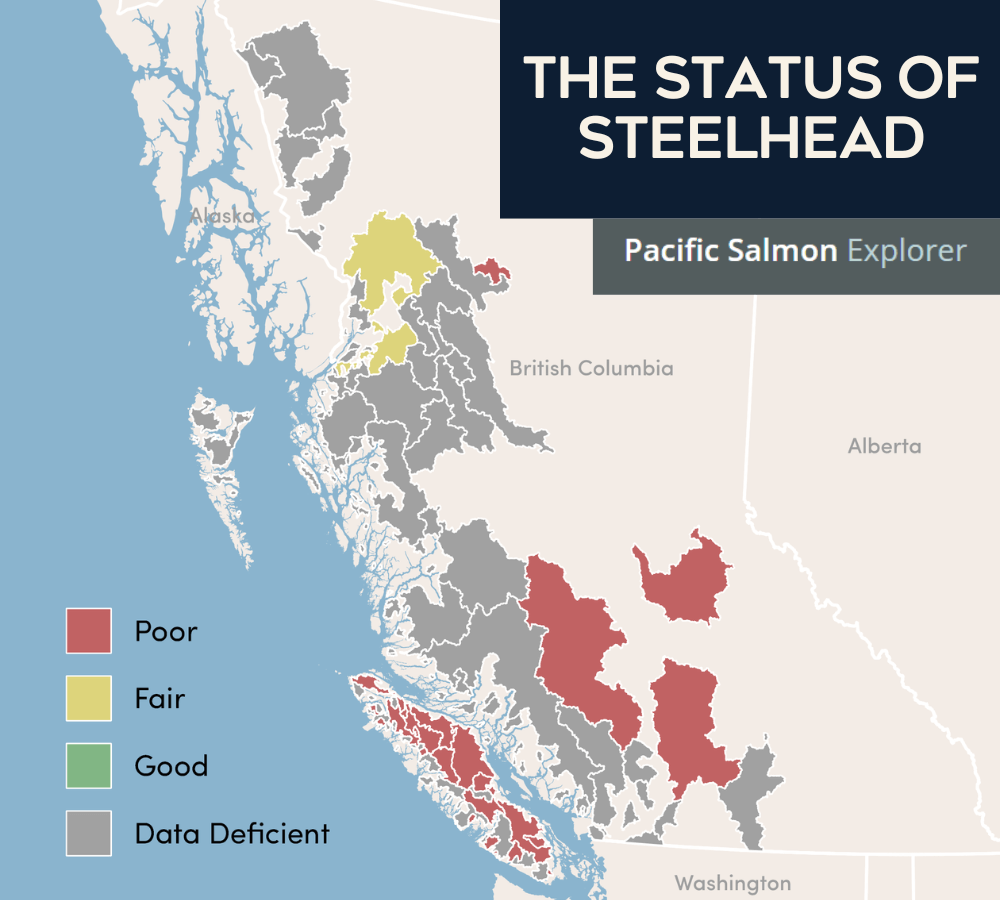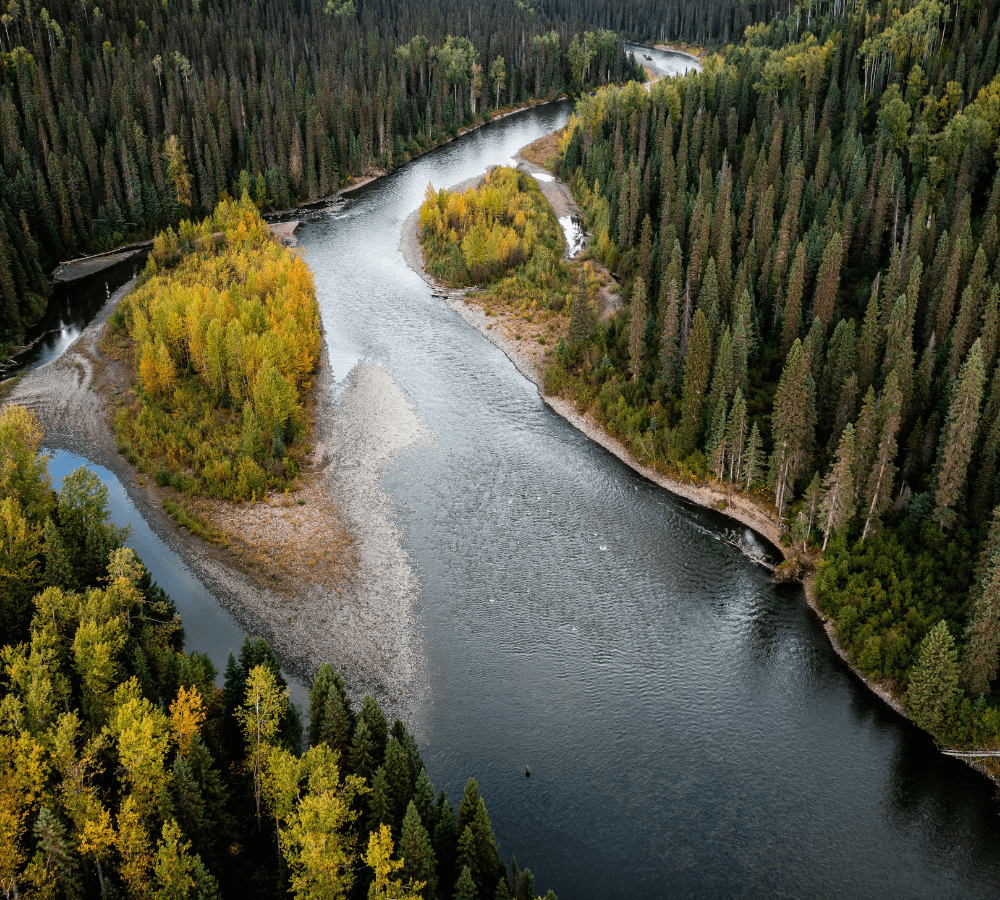PSF compiled the best available steelhead data to assess their conservation status in B.C.
This story originally appeared in the Spring 2024 edition of Salmon Steward, the Pacific Salmon Foundation’s quarterly print magazine.
Photos: Chase White

The decline of Interior Fraser steelhead is well-documented, with less than 1,000 steelhead returning to the Chilcotin and Thompson Rivers in recent years. New status assessments from PSF now indicate that steelhead declines are occurring across the province, not just in interior B.C.
In Gitksan Lax’yip (territory) near Smithers, the poor state of steelhead has significant cultural ramifications.
“Steelhead are very important historically to our people, and as the populations decline, their significance diminishes as well as our food security. I can’t remember the last time somebody brought steelhead to my door. It takes away from our rights to the resource, and our ability to meet social and cultural needs,” says Charlie Muldon, Gitksan Watershed Authorities Coordinator.
All about steelhead
Steelhead are genetically identical to rainbow trout. However, they are anadromous like Pacific salmon, meaning they migrate to the ocean and return to freshwater to spawn. Yet unlike salmon, some steelhead can spawn multiple times.
For many First Nations, steelhead are an important food source and part of their culture and stewardship practices. Some steelhead runs in B.C. are world-famous among recreational fishers. Steelhead also provide essential ecosystem benefits – when they die after spawning, their carcasses release nutrients from the ocean into freshwater environments.
PSF’s new report outlines that among the steelhead population groups with sufficient data available for assessment, 86 per cent face major conservation concerns.
Due to limited monitoring, just 19 of the 429 steelhead populations in B.C. have data on the number of steelhead returning to spawn in the last decade. PSF experts say these data gaps could hinder efforts to implement the appropriate recovery strategies, and lead to “silent” extinctions of unique steelhead population groups.
This hits close to home for Muldon, who recalls ice fishing for steelhead with his father decades ago.
“Steelhead was the fresh food you could get year-round. In the winter and spring, having fresh fats and nutrients was critical to survival. When families went fishing, they had more than what they needed, and they’d share with each other. Steelhead are a very special meal now,” says Muldon.

Declining steelhead abundance in B.C. has been linked to low survival rates in the ocean, harvests in commercial fisheries, and degradation of freshwater habitats due to logging, water extraction, and other human activities.
“Because steelhead spend more time in freshwater than salmon (up to six years), they are more sensitive to freshwater habitat pressures. Steelhead could be the canary in the coal mine for the state of these habitats,” says Katrina Connors, Director, PSF’s Salmon Watersheds Program.
PSF’s report recommends major investments in steelhead monitoring, assessment, and conservation. The team has also published steelhead datasets on the Pacific Salmon Explorer, an online tool that provides free access to comprehensive data for salmon – and steelhead. The project was funded through the British Columbia Salmon Restoration and Innovation Fund, a joint initiative by the Province of B.C. and the Government of Canada.
“I welcome PSF’s inclusion of steelhead data on the Salmon Explorer tool that will increase public access to data on this iconic species,” says Hon. Nathan Cullen, Minister for Water, Land and Resource Stewardship and Minister Responsible for Fisheries.
“There is now a window of opportunity right now to catalyze future investments to improve steelhead monitoring in B.C., address conservation risks, and work more collaboratively towards both ends,” adds Connors.
Read the report, ‘A Snapshot of the Status of Steelhead Populations in B.C.’, to find background context, a summary of key findings, and recommendations related to the status of steelhead in British Columbia.
ABOUT THE PACIFIC SALMON EXPLORER
The Pacific Salmon Explorer is one of the most comprehensive sources of data on salmon – and now steelhead – in B.C., with assessments for 90 per cent of salmon across the province. PSF’s Salmon Watersheds Program has been collaborating with First Nations, federal and provincial governments, academics, non-profits, and independent experts for more than a decade to identify, assemble, analyze, and present the best available data for salmon and steelhead in British Columbia.



